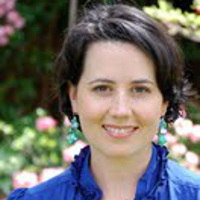NOTE: Images in this archived article have been removed.
 Grist has a fairly damning article of the EPA’s role in the epic honeybee decline over the last decade – the rise of colony collapse disorder and the decline of free pollination of thousands of crops, one of the many services that Nature provides. Apparently, the EPA granted Bayer “conditional registration” to sell the profitable pesticide clothianidin, despite warnings from the EPA’s own scientists that the pesticide was “persistent” and “toxic to honeybees.”
Grist has a fairly damning article of the EPA’s role in the epic honeybee decline over the last decade – the rise of colony collapse disorder and the decline of free pollination of thousands of crops, one of the many services that Nature provides. Apparently, the EPA granted Bayer “conditional registration” to sell the profitable pesticide clothianidin, despite warnings from the EPA’s own scientists that the pesticide was “persistent” and “toxic to honeybees.”
Scientists have not fingered clothianidin as the smoking gun of colony collapse disorder. No doubt loss of habitat, mono-cropping, other pesticides, and a host of other factors play a role. But does it make sense for the EPA to allow a pesticide that is extremely toxic to honeybees to be sold on the open market, even when the pesticide residues are expressed in the pollen and nectar of the flowering crops? Only in a world where we don’t want to eat oranges, apples, pears, peaches, and plums, to name just a tiny percentage of the fruits we eat that are freely pollinated by bees.
So, as with most environmental issues, saving the bees is a matter of saving human food (although hand-pollination is an option, and even practiced in parts of China where the bees have vanished, it is hard to imagine.)
How do we “save the bees?” It seems like giving the EPA a swift kick in the behind might be a good start, but for all you non-political types (like myself), you can also do something at home. Here are three steps you can take to support bees – at least on your own property.
1. Create a bee-friendly environment by offering them plants that flower throughout spring, summer, and fall:
– Plant an insectary with flowering
plants that bees love: lemon balm, borage, tansy, goldenrod, echium, mint, heather, salvias, lavender, coriander, thyme, elderberry, heirloom rugosa roses, and willow. Many of these are also medicinal or herbal plants.
– Plant a clover lawn, which has the added benefit of needing less fertilizers, pesticides, and mowing.
– Perhaps you could even let your
dandelions flower – they are an important source of nectar and pollen early in the season, as well as being an edible medicinal “weed.”
2. Stop using pesticides that harm bees (and encourage your neighbors to avoid them), and
3. Become a
beekeeper. Bees don’t need a lot of room, since they roam freely; and you have the added benefit of excellent pollination of your own crops and a steady, renewable, organic source of sweetness.
At my home, we have only taken the first two steps. We have a clover/dandelion backyard filled with flowering medicinals and herbals, and a front yard that has peach trees, catmints, salvias, and thyme. We don’t use any bee-toxic pesticides on our property. At this point, I can only aspire to become a beekeeper. But who knows what 2011 might hold? Honey would certainly be a space-efficient, highly tradeable, multi-purpose, and valuable food to be able to produce.
 Grist has a fairly damning article of the EPA’s role in the epic honeybee decline over the last decade – the rise of colony collapse disorder and the decline of free pollination of thousands of crops, one of the many services that Nature provides. Apparently, the EPA granted Bayer “conditional registration” to sell the profitable pesticide clothianidin, despite warnings from the EPA’s own scientists that the pesticide was “persistent” and “toxic to honeybees.”
Grist has a fairly damning article of the EPA’s role in the epic honeybee decline over the last decade – the rise of colony collapse disorder and the decline of free pollination of thousands of crops, one of the many services that Nature provides. Apparently, the EPA granted Bayer “conditional registration” to sell the profitable pesticide clothianidin, despite warnings from the EPA’s own scientists that the pesticide was “persistent” and “toxic to honeybees.”





